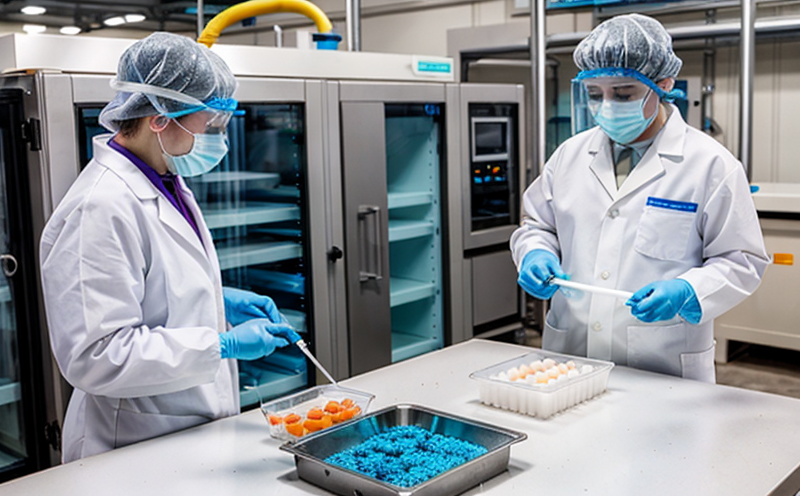ISO 11731 Legionella Detection in Water-Filled Toys
The ISO 11731 standard provides a robust framework for detecting Legionella pneumophila, the bacterium responsible for causing Legionnaires’ disease, in water systems. When applied to water-filled toys and other similar products intended for children, this testing ensures that these items remain safe from microbial contamination.
In the context of toy manufacturing, ensuring microbiological safety is paramount not only due to health and safety regulations but also because of public trust and consumer confidence. The presence of Legionella in water-filled toys could lead to severe health risks, especially among children who might put these items into their mouths or drink from them.
The ISO 11731 testing procedure is designed specifically for the isolation and identification of Legionella pneumophila. It involves several key steps: water collection, sample preparation, incubation, and analysis. The method relies on selective media that enhances the growth of Legionella while suppressing other microorganisms.
The testing process typically begins by collecting a representative water sample from the toy’s reservoir or any part where water is held. This sample must be transported to the laboratory under strict conditions to maintain its integrity until it can be processed. Once at the lab, the sample undergoes rigorous preparation, which includes dilution and plating on selective media.
The incubation period for Legionella growth is critical and ranges from 5 to 10 days depending on the incubator conditions set by the testing protocol. After this time, any colonies that have formed are examined under a microscope or using other identification techniques to confirm their identity as Legionella pneumophila.
The results of this test provide crucial information about the microbial content within water-filled toys. Compliance with ISO 11731 helps manufacturers demonstrate adherence to international standards, thereby enhancing product safety and reliability.
| Key Steps in ISO 11731 Testing |
|---|
| Water Collection |
| Sample Preparation |
| Incubation Period |
| Identification and Confirmation |
The testing process is not only about compliance but also about protecting public health. By adhering to ISO 11731, toy manufacturers can ensure that their products are safe for use by children. This standard plays a vital role in maintaining the integrity and reputation of the industry.
Industry Applications
The application of ISO 11731 Legionella detection is particularly relevant to industries dealing with water systems, including:
- Toys
- Baby products
- School supplies
- Park equipment for children
Water-filled toys and similar items are often used in environments where they come into direct contact with young users. The presence of Legionella pneumophila can pose significant health risks, especially since the bacteria thrive in warm water conditions typical of many toys.
The testing ensures that these products do not become a vector for disease transmission. Compliance with ISO 11731 is crucial not only to meet regulatory requirements but also to safeguard public health and maintain brand reputation.
International Acceptance and Recognition
ISO 11731 is internationally recognized as a standard for the detection of Legionella pneumophila. Its acceptance across various countries underscores its significance in ensuring public health and safety. The standard is widely adopted by regulatory bodies, manufacturers, and testing laboratories around the world.
In many regions, compliance with ISO 11731 is a mandatory requirement for products intended for children, reflecting the global commitment to protecting public health. Manufacturers who comply with this standard demonstrate their dedication to maintaining high standards of quality and safety.
Use Cases and Application Examples
- Testing water reservoirs in educational toys designed for preschoolers.
- Assessing the microbiological safety of water-filled park equipment used by children.
- Evaluating the suitability of new toy products before market release to ensure compliance with international standards.
In each case, ISO 11731 provides a consistent and reliable method for detecting Legionella pneumophila. This ensures that toys and similar items are safe from microbial contamination and meet the highest safety standards.





